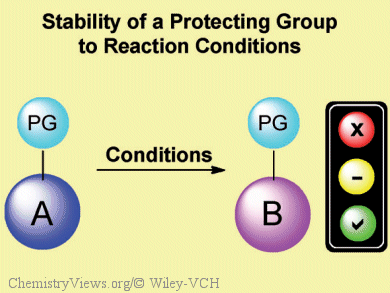Protecting group (PG) chemistry is a fundamental part of organic synthesis. The selection of an appropriate PG is critical and requires knowledge of both the PG and the reaction conditions it will be exposed to. The great amount of texts on PGs often provide little information about contemporary synthetic methods, because new synthetic methodologies are reported at high rates.
Following their recent publication of a “robustness screen” for the rapid assessment of functional-group and structural-motif tolerance for a given reaction [1], Karl D. Collins and Frank Glorius, Westfälische Wilhelms-Universität, Münster, Germany, and colleagues describe an experimentally simple method to rapidly establish the stability of widely utilized silyl, acetal, and carbamate protecting groups to a given set of reaction conditions. The Cu(OAc)2-mediated preparation of pyrazoles was used as the model reaction. The assessment of up to twelve protecting groups in a single experiment was possible.
Evaluation of this protocol in two unrelated synthetic transformations suggests that it can be used to select appropriate protecting groups in the design of synthetic routes.
- Rapid Assessment of Protecting-Group Stability by Using a Robustness Screen,
Karl D. Collins, Andreas Rühling, Fabian Lied, Frank Glorius,
Chem. Eur. J. 2014.
DOI: 10.1002/chem.201304508
[1] Karl D. Collins, Frank Glorius, Nat. Chem. 2013, 5, 597–601. DOI: 10.1038/nchem.1669




